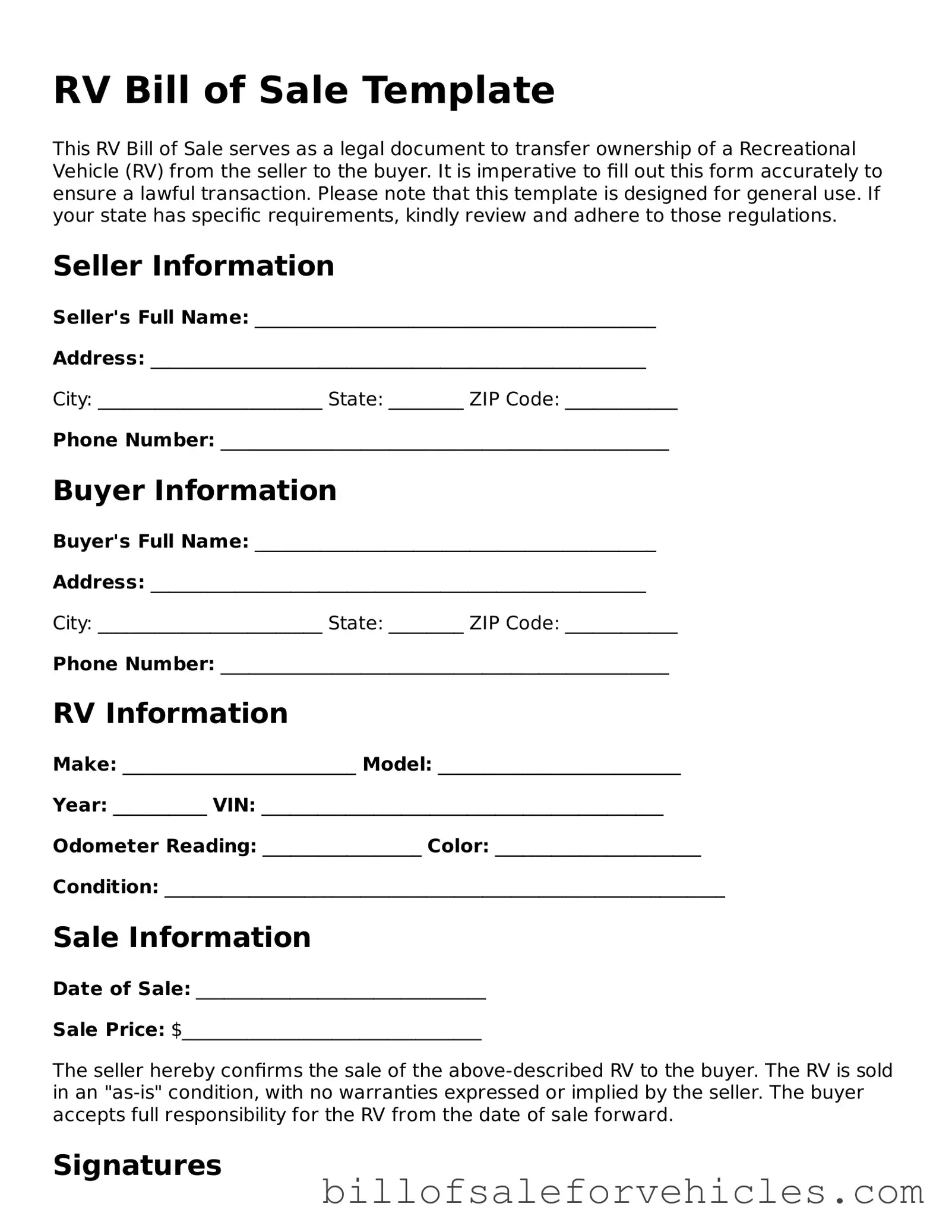RV Bill of Sale Template
This RV Bill of Sale serves as a legal document to transfer ownership of a Recreational Vehicle (RV) from the seller to the buyer. It is imperative to fill out this form accurately to ensure a lawful transaction. Please note that this template is designed for general use. If your state has specific requirements, kindly review and adhere to those regulations.
Seller Information
Seller's Full Name: ___________________________________________
Address: _____________________________________________________
City: ________________________ State: ________ ZIP Code: ____________
Phone Number: ________________________________________________
Buyer Information
Buyer's Full Name: ___________________________________________
Address: _____________________________________________________
City: ________________________ State: ________ ZIP Code: ____________
Phone Number: ________________________________________________
RV Information
Make: _________________________ Model: __________________________
Year: __________ VIN: ___________________________________________
Odometer Reading: _________________ Color: ______________________
Condition: ____________________________________________________________
Sale Information
Date of Sale: _______________________________
Sale Price: $________________________________
The seller hereby confirms the sale of the above-described RV to the buyer. The RV is sold in an "as-is" condition, with no warranties expressed or implied by the seller. The buyer accepts full responsibility for the RV from the date of sale forward.
Signatures
Seller's Signature: _____________________________ Date: ________________
Buyer's Signature: _____________________________ Date: ________________
Witness (if applicable)
Witness's Signature: __________________________ Date: ________________
Print Name: _____________________________________________________________
Additional Instructions
It is recommended to keep copies of this bill of sale for both the buyer and seller's records. The buyer may need to present this document for registration and title transfer purposes. Please consult with your local Department of Motor Vehicles (DMV) or equivalent authority for specific state requirements and instructions.
